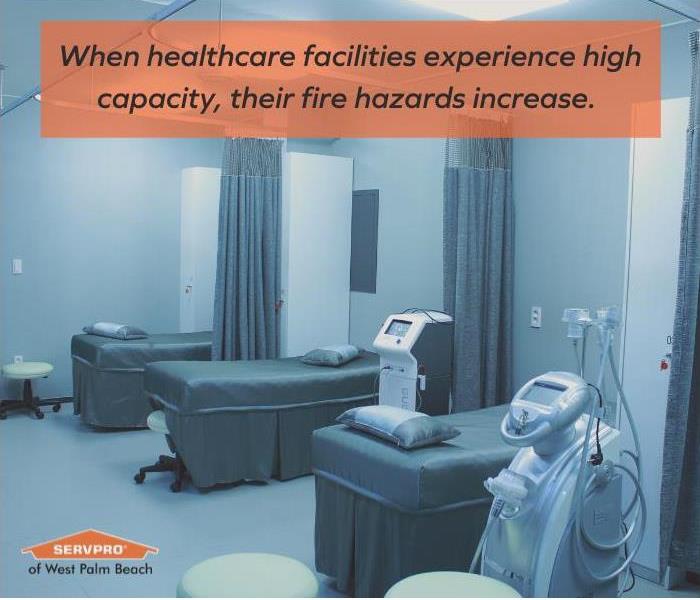Pandemic Increased Fire Hazards In Healthcare Facilities
1/27/2022 (Permalink)
 More oxygen gas tanks and cleaning agents are in healthcare settings, which increases the need for careful handling of these hazards.
More oxygen gas tanks and cleaning agents are in healthcare settings, which increases the need for careful handling of these hazards.
There are many safety and fire hazards that exist within such multifunctional, and at times expansive, spaces. The pandemic could have inadvertently created more consistent fire risks in these settings, according to a report published in Europe PubMed Central. This is due to the coronavirus treatments including the demand for more oxygen being administered. With more oxygen-rich environments, more oxygen-related hospital fires occur. Intensive care units experienced maximum capacity of patients and in many cases, smaller staffs which stressed operations across the world. We are still experiencing and understanding the effects of the pandemic’s presence on our hospital and health care facility systems. With this awareness, health care system workers and external contractors can commit to consistent and careful maintenance of these areas. Below are some of the fire safety strategies we can use in health care facilities.
Storage of Cleaning Agents and Industrial Gas
Oxygen-enriched materials are easier to ignite. Guidance from local authorities should be sought from facilities managers on the storage of these gas cylinders. The proper inspection of oxygen tanks is important to stop any leaking valves or malfunctioning masks, to be able to properly control the levels of oxygen in an environment.
- Medical gas cylinders storage areas should be cool, dry, and ventilated.
- Store full cylinders away from used or open oxygen cylinders.
- Proper chemical handling and routine inspections. Reinforce training on the handling and storage of chemical hazards through adequate signage.
- Increase airflow in areas where oxygen therapy is administered.
Clear Paths to Resources and Exits
Healthcare facilities are very frantic, rapidly-moving settings. Keeping exits clear and full access various fire suppression resources is essential.
- Don’t obstruct fire extinguishers and ensure all new employees are trained in their use.
- Never block fire pull stations or emergency equipment.
- Routinely test fire alarm and or sprinkler systems.
- During an active fire alarm, move all equipment from the corridors and exit ways.
Electrical Hazards
Hospitals have particularly elaborate electrical distribution systems to help support the critical care of patients. Some basic electrical hazard training can be key for staff to help prevent electrical fires. The pandemic has also increased the frequency of use of flammable or combustible materials such as sanitizers, disinfectants, and even personal protective equipment.
- Develop a system for inspecting equipment and labeling those machines and electrical equipment that has been routinely inspected. Create a process for reporting malfunctioning equipment.
- If extension cords are to be used, make sure they are not located near any flammable materials.
Planning for Quick Smoke, Soot, and Fire Restoration
Smoke and soot, because of incomplete combustion, can lead to poisonous chemicals such as carbon monoxide in the air. Soot and smoke inhalation pose serious health risks for patients and health care professionals. Smoke particles can be absorbed in our bodies by inhaling, through our eyes, skin, and ingestion. Quick smoke remediation is important to prevent further structural damage to materials that made up ceilings, walls, and flooring, or cabinetry.
Their infrastructures are expected to provide safe critical life-preserving care. A well-maintained and frequently improved facility is more likely to prevent and withstand fire damage. Proper training, with simulations and drills, assist in the prevention of fire emergencies.
SERVPRO of West Palm Beach has the equipment, training, and capabilities to restore health care facilities to a safe and operational state. We also offer free Emergency Ready Profiles for facilities to use as a training and disaster preparedness tool. Commercial fire damage restoration is one of our specialties. Call 561-795-5410 with inquiries about our healthcare restoration services and to receive your free ERP.

 24/7 Emergency Service
24/7 Emergency Service